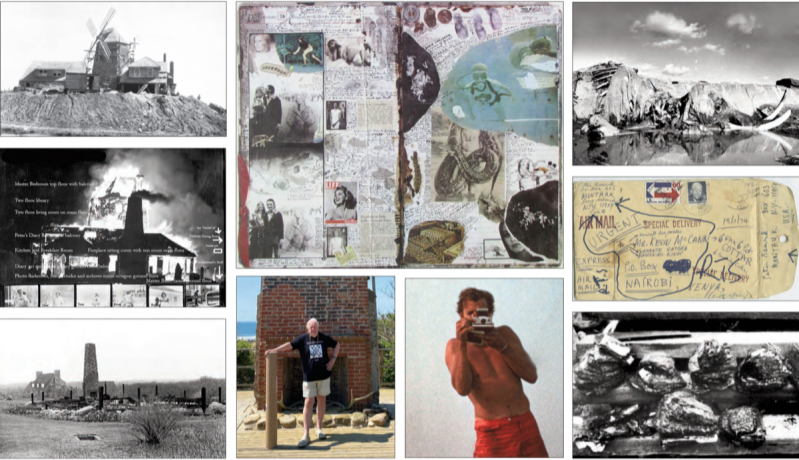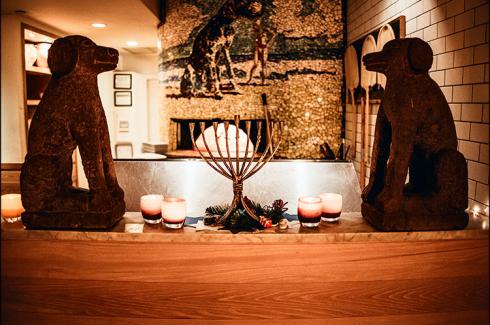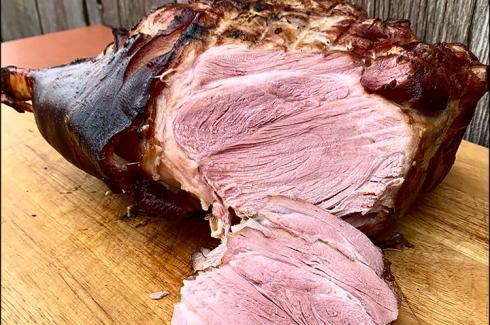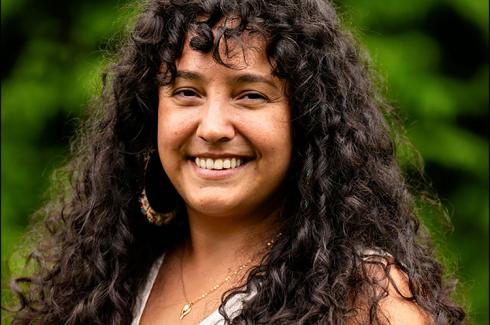A kid with a sense of adventure and history who grows up in a seaside hamlet finds himself exploring the world with his camera. Back home in Montauk, he meets and befriends a kindred spirit and his life changes forever.
Kevin McCann, that Montauk kid, has since worked on many projects, including amassing a collection of George Tooker's photography (some of which is on view at the Sag Harbor Whaling Museum).
He credits finding that early focus to his friendship with Peter Beard, another camera-toting world traveler, who died in Montauk last year, and with whom he worked in a period from 1972 to 1978. "When I came back from traveling around Europe taking photographs, I met Peter at the Shagwong and didn't know who he was," he recalled, but they became fast friends.
He is channeling that friendship in a documentary in progress, tentatively titled "Montauk: A Playground at the Very Limit of Creation." The film finds its center through the windmill Beard brought to his property in 1973. Mr. McCann is using its history to trace the development of Montauk and its changing roles and identity through two different centuries.
Now a resident of Northern California, Mr. McCann continues to visit Montauk annually, including a recent visit for the Whaling Museum show. That project was part of a broader effort on the part of Mr. McCann to document Montauk's history with historical imagery mixed with contemporary photographs. Some of that effort will now be in narrative form in the film, in a way very much inspired by Beard (who will be the subject of a more comprehensive life story in a documentary planned by the Peter Beard Studio).
The film's timeline is from 1860 to 1978. Its early focus is on Carl Fisher's influence on the transformation of the hamlet from 1925 to 1935 into the "Miami of the North," with its later focus on the years Mr. McCann spent at Thunderbolt Ranch, the name Beard gave his property after lightning struck the windmill during its renovation, causing a fire.
He plans to use primarily still photography to "document the transformation from early primitive Montauk to a bustling, overpopulated, stressful world resort town of today."
Helping mark this transition is the real star of the piece, the Sandpiper Hill Windmill, known at various times as the McCaffray and Rheinstein Windmill. Beard acquired it at a town auction for $15,000 with the stipulation that it had to be moved from its property in a short amount of time.
Built in 1928 as one of three windmill residences during the early "playground" period, it was a byproduct of the attention that Fisher had lavished on Montauk beginning in 1926, when he looked to form a "principality for achievers," as Mr. McCann noted. Although he ultimately lost everything as a result of the Depression, his efforts to attract his well-to-do friends continued even after the stock market crash of 1929. Although it bankrupted Fisher, many captains of industry were enticed to spend their summers there or build fishing lodges on the bluffs.
After Beard bought the windmill, Mr. McCann, who was working in contracting at the time, supervised the move and built the foundation for it with his brother and some friends. Another friend, who became a documentary filmmaker, took Super 8 footage of the move, which has been digitized for Mr. McCann's film.
When Beard died, Mr. McCann began thinking about all of the projects that happened during that earlier period of his life. It became the impetus for the film. He recalled that he had amassed troves of historical documentation of the early days of Montauk and was the only person who had photographed every page of the heavily notated scrapbooks that are more commonly referred to as Beard's diaries. Many of these were destroyed in the fire, along with many of Mr. McCann's negatives. Having the through line of the windmill and its fire tied it all together.
He also found meaning in the work and thoughts of artists, philosophers, and historians whose words seemed to him to apply directly to Montauk's development, ideas of place, and how photography of the past tells both specific and universal stories.
Although he mentions the proto-history of the various Native American inhabitants, Vikings, pirates, and explorers, one of the earliest photographs Mr. McCann has is a rare image of a gate going into Montauk from the late 1880s. During this period, he noted, the piers were built and the ferries came. He has images of Teddy Roosevelt and the Naval Air Station to segue to the Fisher years and the windmill's origins.
According to Mr. McCann, the windmill was built as part of an estate called Sandpiper Hill House. It was built at a site west of Ditch Plain that was used as a camp by Roosevelt in 1898 at the end of the Spanish-American War. Walter McCaffray, a founder of St. Therese of Lisieux Church and a well-off stockbroker from Brooklyn, was a friend of Fisher and commissioned the house. After he and his wife died, it was left to the Jesuits, who used it as a retreat. They then sold the property to the Rheinstein family in 1946, who owned it until 1968.
A few others entered the picture, and Mr. McCann's family actually lived on the property as part of a winter share one year, but it was eventually sold to the town. "It was just amazing," he recalled of his brief residency there.
Beard used the windmill as residence, darkroom, studio, gallery, office, and archive. Mr. McCann said Thunderbolt Ranch "was not a ranch in the classical sense of raising wild stock, it was known for collecting and raising a varied breed of 'human stock' . . . specimens of a world social society of celebrities" -- in entertainment but also other "stars" of their fields, including scientists, politicians, academics, businessmen, chefs, and friends made along the way.
He plans to draw a brief parallel to Beard's Kenyan property, Hog Ranch, where his neighbor was Isak Dinesen and he and others slept in tents, to demonstrate his unique lifestyle and why the windmill appealed to him.
The fire fried a good deal of archival material, but many of the diaries were saved as well as negatives and prints. Mr. McCann intends to end his film in 1978, when he leaves Montauk, but there will also be a short tribute to Beard and Montauk. It is still in preproduction, and he is currently raising funding and looking for a good editor.




